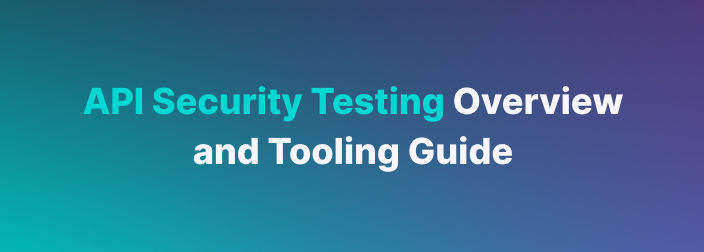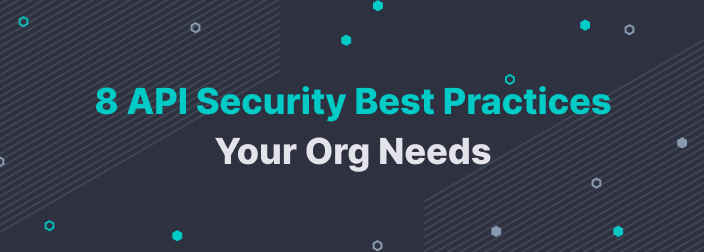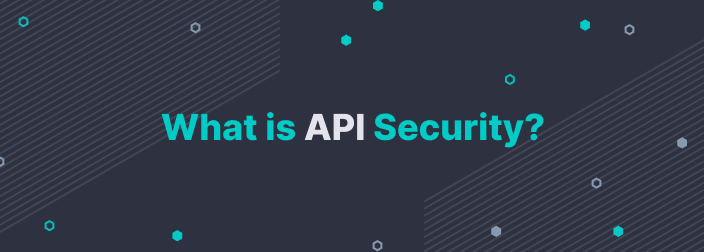It’s no surprise to developers and their enterprises that APIs have emerged as the fundamental building block of modern applications and integration. With this massive adoption of APIs across the software development landscape, APIs have become a primary target for cyber threats and attacks. The result is that API security is no longer a mere necessity—it's one of the core factors in the security of overall business operations.
API security is a broad term that encompasses the strategies, technologies, and practices that are used to keep APIs secure and compliant. The significance of adopting a strong API security posture is its capacity to prevent data breaches, safeguard sensitive data, and maintain service integrity. Without success in these areas, an organization's survival and trustworthiness in the modern marketplace would be questioned.
In this blog, we'll explore multiple angles regarding API security, illustrating its importance and inherent complexities. We'll outline what an API security solution typically includes, provide insights on choosing the right one for your organization, and discuss the different types of API security measures that are critical for protecting your APIs. Lastly, we will look at the top 5 API security solutions of 2023. Let’s get started by looking at the basics of API security.
What is API Security?
APIs are the cornerstone of modern application architectures. APIs, or Application Programming Interfaces, have been around since the early days of computing. However, it was the advent of the internet and cloud computing that they really began to take off in numbers and popularity. APIs facilitate the interaction between different software applications, giving a mechanism for applications to communicate, share data, and leverage various services.
Historically, as enterprises began to expose their services over the web, they did so via APIs. This led to a massive increase in the amounts of APIs available as companies worked to make services more widely available internally and externally. Then, with the proliferation of mobile apps, cloud services, and IoT devices, APIs have further expanded their footprint. With each of these expansions in API availability came an increased risk of exposure to malicious activities.
To combat these potential security issues, API security began as a set of best practices. At the most basic level, this included practices such as adding basic authentication and authorization techniques. However, as the threats grew more sophisticated, so did the best practices. Eventually, the need for comprehensive API security solutions became evident to support these standards.
API security, at its core, is about ensuring that interactions with APIs are secure, authenticated, and performed as intended. At a basic level, API security involves several components:
Authentication ensures that the entity requesting access to the API is who it claims to be.
Authorization dictates what an authenticated entity is allowed to do.
Encryption protects data in transit from eavesdropping or tampering.
Input Validation ensures that the API can reject improperly formatted data, which could otherwise lead to SQL injection or other attacks stemming from input.
Rate Limiting prevents abuse of APIs by limiting how many requests an entity can make in a given timeframe.
Within API security, it's clear that threats continue to evolve and require constant attention to stay on top of. Modern API security solutions must anticipate and defend against various attacks outlined in the OWASP API Security Top 10, including
Man-in-the-Middle (MitM) Attacks, where an attacker intercepts communications between the client and the API to eavesdrop or alter the data.
Injection Attacks, such as SQL injection, where an attacker sends malicious input to the API, tricking it into executing unintended commands.
Broken Authentication and Session Management, where poor handling of user sessions and credentials can lead to unauthorized access.
Insecure Direct Object References (IDOR), allowing an attacker to access objects, such as files or databases, directly through the API.
Security Misconfiguration, which can occur at any level of the API stack, from the network services to the application layer, exposing vulnerabilities.
With the basics of API security outlined and some potential attacks that could be executed covered, it’s time to dig deeper into the solutions to combat API-based attacks. Next, let’s take a look at the various API security solutions that are available.
What is an API Security Solution?
API security solutions are a comprehensive set of security measures specifically designed to protect the integrity, availability, and confidentiality of APIs. Some solutions cover various aspects, while others are more honed to cover a single aspect extremely well. The core functions of an API security solution typically align with one or more key areas of API security. Let’s take a look at a few types of API security solutions.
Dynamic Security Scanning and Testing
Modern tools like StackHawk provide dynamic application security testing (DAST) capabilities. These tools allow developers to actively test and find security vulnerabilities within their APIs during the development cycle. This is crucial for ensuring that any security issues can be addressed before the API is deployed into a production environment.
Protection Against DDoS and Automated Threats
Solutions like Akamai utilize extensive networks and advanced algorithms to protect against Distributed Denial of Service (DDoS) attacks and automated threats. This type of tool is required to ensure that APIs remain available and responsive even under attack.
Vulnerability Management for Open-Source Libraries
Given the reliance on open-source software in API development, tools like Snyk can scan for vulnerabilities within these libraries, on top of other functionalities. The platforms detect vulnerabilities and then provide insights and patches to fix them, securing the foundation on which the APIs are built.
Holistic API Protection Platforms
Some platforms aim to offer protection from multiple angles. For example, Noname Security represents a class of solutions that offer holistic protection. These platforms perform real-time traffic analysis, detect and prevent API abuses, and ensure compliance with security policies and regulations.
AI-Driven Security Measures
SALT Security uses artificial intelligence to learn from API traffic and interactions continuously. This allows the tool to identify and mitigate potential threats, including zero-day vulnerabilities that traditional security measures might overlook.
Of course, these are just a few categories within the API security solution category. As we discuss the top 5 API security solutions, remember that each brings unique strengths and often serves complementary roles within a comprehensive API security strategy. Most companies will use a mix of these tools to create their API security stack.
How to Choose an API Security Solution
Choosing the right API security solutions to implement is a pivotal decision that requires a strategic approach. Given the vast amount of options available, it's crucial to select tools that not only address current security needs but are also adaptable to handle future challenges and vulnerabilities. Let’s now take a look at some considerations when it comes to choosing the right tools for your use case.
Assess Your API Landscape
First, you should start by understanding your API footprint. Based on the technologies you are using, such as REST, GraphQL, or gRPC, this will help to determine which tools you can use. For instance, a tool like StackHawk is flexible enough to provide testing coverage for multiple types of APIs. Knowing what technologies are being used within your APIs is a crucial first step to determining the applicable tools.
Identify Your Security Requirements
Next, you’ll need to determine the specific security needs of your APIs. This will depend on factors such as whether the APIs are internal or external and the language/framework the APIs are built with. Specific languages may have inherent vulnerabilities that might be more easily detected and remedied by specific tools.
Integration with Existing Systems
Optimally, The API security tool should integrate seamlessly with your current infrastructure. If you're using CI/CD pipelines for development, you’ll want to find tools that can be configured to run automatically within such an environment. Aim for a tool that does not require infrastructure or process changes to accommodate it.
Regulatory Compliance
Depending on whether your business must comply with any regulatory standards; you’ll want to ensure that the tool helps you comply with relevant regulations. If you’re using a SaaS tool, you’ll also want to ensure the platform complies with your standards (such as SOC II compliance). For instance, if you're dealing with healthcare data, HIPAA compliance would be a priority. For this, you’d want to find a tool that can assist with data protection and access controls.
Performance and Scalability
You’ll also need to keep performance and scalability in check. Tools that take a more active role in security, such as real-time monitoring, should not impede API performance or the API's ability to scale. Look for a tool with scalability that can adapt as your API traffic grows.
Ease of Use and Management
For the sake of the developers and teams using the tool, the solution should be user-friendly. This includes ensuring the tool does not require extensive training to configure, use, and manage. Tools that offer intuitive dashboards and alerts can simplify the task of monitoring API security.
Vendor Reputation and Support
With the vast array of tools available, it also makes sense to research the vendor's track record. Look for user testimonials, case studies, or reviews that indicate the reliability and effectiveness of their solution. Preferably, look for info that reflects your use case, paying attention to any issues that are called out. You’ll also want to evaluate the support services they offer, including if good or bad remarks about it are mentioned in a review or testimonial.
Cost Considerations
Lastly, and sometimes most importantly, consider the cost of ownership for the tool. Some tools might offer basic protection at a lower cost, but you may need more advanced features as your API landscape matures. You’ll want to ensure that the tool brings a sufficient return on investment, balancing the cost of the tool against the benefits it provides.
By carefully evaluating these factors, developers and organizations can make an informed decision on whether the tools they plan to use will work. Making sure that tools align with their security posture, regulatory needs, and operational requirements helps to ensure the chosen API security solution is a good fit for their environment and use case.
What are the Types of API Security?
Before we get into the tools, we should take a deeper look at the different types of API security. API security is a comprehensive term that includes various practices and mechanisms to protect the integrity, confidentiality, and reliability of APIs. Below are some of the critical types of security that should be applied to APIs.
Authentication
Authentication verifies the identity of a user or service requesting access to an API. It's the first line of defense, determining whether a user is who they claim to be. Having an authentication mechanism in place prevents unauthorized access, ensuring that only validated users can interact with your API endpoints.
Authorization
Once a user is authenticated, authorization determines what they can do and what endpoints they can access. It's about granting appropriate access levels and permissions to authenticated users. Effective authorization ensures users can only perform actions that align with their permissions, which is crucial for maintaining data integrity and privacy.
Encryption
Encryption secures data in transit and at rest, making it unreadable in its encrypted state. This helps to protect sensitive information from interceptors. Encryption while data is in transit and at rest is vital for protecting data confidentiality and preventing breaches. Most API consumers will want to know what encryption mechanisms are in place since it is critical for user trust and legal compliance.
Rate Limiting and Quotas
Rate limiting and quotas control the number of API requests a user can make in a given period. This helps to manage API traffic and helps to prevent abuse, which may be intentional, such as a Denial of Service attack, or unintentional, such as an unintentional recursive API call in the code. Rate limiting is a frontline measure for preventing service outages caused by intentional attacks or unintentional traffic surges.
Input Validation
Input validation checks user input against a set of rules before processing, ensuring only expected and adequately formatted data is accepted. Input validation is crucial for preventing many different types of attacks, such as SQL injection, that exploit input vulnerabilities. Many languages and frameworks have best practices, sometimes baked in, to ensure that input validation and sanitization are handled correctly.
Security Misconfiguration Protection
This type of security addresses vulnerabilities that arise from insecure default configurations or incomplete setups. This could happen at the infrastructure layer or even in the code. Addressing security misconfigurations closes gaps that attackers often exploit, which can prevent data leaks and unauthorized access.
Automated Threat Detection and Response
This involves real-time monitoring of API traffic to identify and mitigate threats as they occur. API traffic is automatically monitored and assessed, more commonly through AI, to check for potential issues. Quick detection and response limit the damage from any attacks being executed, reducing potential downtime and preserving data integrity.
API Gateway Security
Another type of API security is introducing an API gateway or API management tool. The gateway is an additional layer between an API client and your APIs, enforcing security policies. API gateways centralize security management, reduce complexity, and offer an additional layer of defense. Popular API gateways include Kong, AWS API Gateway, and Tyk.
Automated Security Scanning and Testing
With automated scanning and API security testing, your code and running application can be scanned for potential vulnerabilities that stem from any of the above factors. For instance, a static code analysis tool, such as Snyk, can help to look directly at the code to see if any vulnerabilities are present. With a dynamic application security testing tool like StackHawk, the running application can be tested for vulnerabilities that can actually be exploited. Using automated testing like this can help uncover issues with authentication, authorization, injection/input validation issues, etc.
Each type of API security plays a role in a layered defense strategy, ensuring comprehensive protection. Implementing a combination of these types creates a robust security framework that can adapt to emerging threats and protect an organization's data and APIs.
The 5 Best API Security Solutions of 2023
Now that we have covered the various API security solutions, it’s time to look at five of the best and most popular available tools. In the rapidly evolving landscape of API security, several solutions stand out for their innovative approach to API security. Let's look below at the top five API security tools of 2023.
StackHawk
The first tool we will look at is Stackhawk, a dynamic application security testing (DAST) solution that empowers developers to find and fix security vulnerabilities. StackHawk enables users to test their APIs and web applications automatically right from the beginning of the development process. For example, a company can integrate StackHawk into its CI/CD pipeline to automatically test APIs after each deployment. This ensures that vulnerabilities in the running application are caught and remedied before they reach production.
Benefits of StackHawk
Seamlessly integrates with modern development workflows, including directly in CI/CD.
Enables early detection of security issues in running applications.
Enhances developer productivity by automating security testing and reducing “false positive” detection.
Provides clear vulnerability documentation to help developers quickly fix issues.

Akamai
Akamai is a comprehensive, cloud-based security platform known for its cloud security solutions. Akamai’s CDN technologies protect extensively against large-scale DDoS attacks and automated web attacks. For example, an e-commerce platform can leverage Akamai's CDN to protect its APIs from DDoS attacks during high-traffic events, such as those that might occur during Black Friday sales.
Benefits of Akamai
Extensive network capable of absorbing large DDoS attacks.
Advanced threat intelligence to proactively counteract emerging threats.
Optimizes API performance with its CDN capabilities.
Provides automated web attack protection and malicious bot management.
Snyk
Snyk specializes in scanning, prioritizing, and fixing security vulnerabilities within code, open-source dependencies, container images, and infrastructure as code configurations. For example, a fintech startup could use Snyk to continuously scan API code and dependencies its APIs for vulnerabilities in open-source libraries, keeping its financial services secure.
Benefits of Snyk
Includes a comprehensive database of known vulnerabilities.
Can be integrated directly into the development process, including in CI/CD flows.
Offers real-time alerts and automated fixes for vulnerabilities.
Supports a wide range of programming languages and environments.
Learn how StackHawk and Snyk correlate dynamic and static API Security Testing for faster fixes.
Noname Security
Noname Security offers a holistic API security platform that performs real-time traffic analysis to detect and prevent API abuse. It can also help to ensure compliance with security policies and standards, such as the Payment Card Industry (PCI) standard and the Health Insurance Portability and Accountability Act (HIPAA). For example, a healthcare provider could use Noname Security to monitor API traffic for abnormal patterns indicating a data breach, protecting sensitive patient data.
Benefits of Noname Security
Provides complete visibility into API traffic and security posture.
Detects and mitigates sophisticated API attacks and vulnerabilities.
Helps with regulatory compliance through robust data protection.
Offers a zero-trust architecture for API security.
SALT Security
Our last tool to highlight is SALT Security. SALT Security’s platform employs AI to provide continuous discovery and real-time protection for APIs against attackers. This offers insights into the security of an organization’s APIs throughout their lifecycle. For example, an online retailer could use SALT Security to analyze its API traffic patterns and identify fraudulent transactions before they affect the business.
Benefits of SALT Security
Utilizes AI to identify and respond to anomalous behavior quickly.
Continuous discovery and assessment of API risks.
Provide insights into API usage and potential security gaps.
Helps prevent business logic abuse through sophisticated pattern recognition.
Each of these API security solutions offers unique capabilities to address the diverse needs of modern digital enterprises. By leveraging these tools and potentially layering many of them together, organizations can strengthen their defenses against the sophisticated threat landscape they and their APIs face.
Conclusion
In this review of API security solutions, we've uncovered the importance of safeguarding one of the most critical pieces of modern enterprises: APIs. We explored the essence of API security, looked at the basics of what an API security solution is, and provided a framework for choosing the right tool for your needs. We also broke down the types of API security to give you a clear view of the defenses that should be in place to ensure secure APIs.
Lastly, we introduced the top 5 API security solutions of 2023—StackHawk, Akamai, Snyk, Noname Security, and SALT Security. We looked at each tool's unique benefits, from StackHawk's developer-centric security testing to Akamai's robust DDoS protection, Snyk's vigilant open-source scanning, Noname Security's comprehensive traffic analysis, and SALT Security's AI-driven insights.
If you're ready to take your web application and API security testing to the next level, take the first step by signing up to try StackHawk. With its seamless integration into your development processes and CI/CD pipelines and powerful API security testing capabilities, StackHawk ensures that your APIs are built securely from the start.
Alexa Sevilla is Director of Product Marketing at StackHawk



